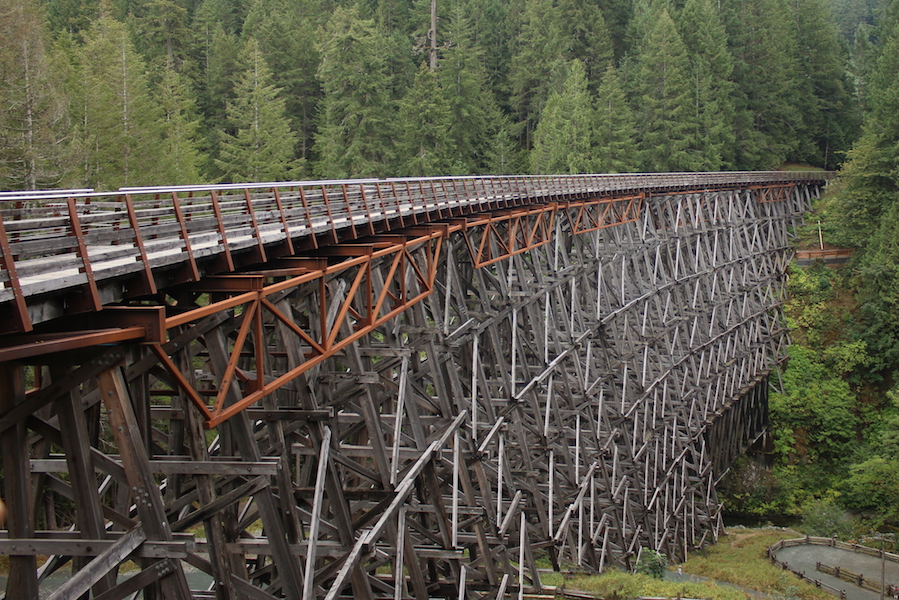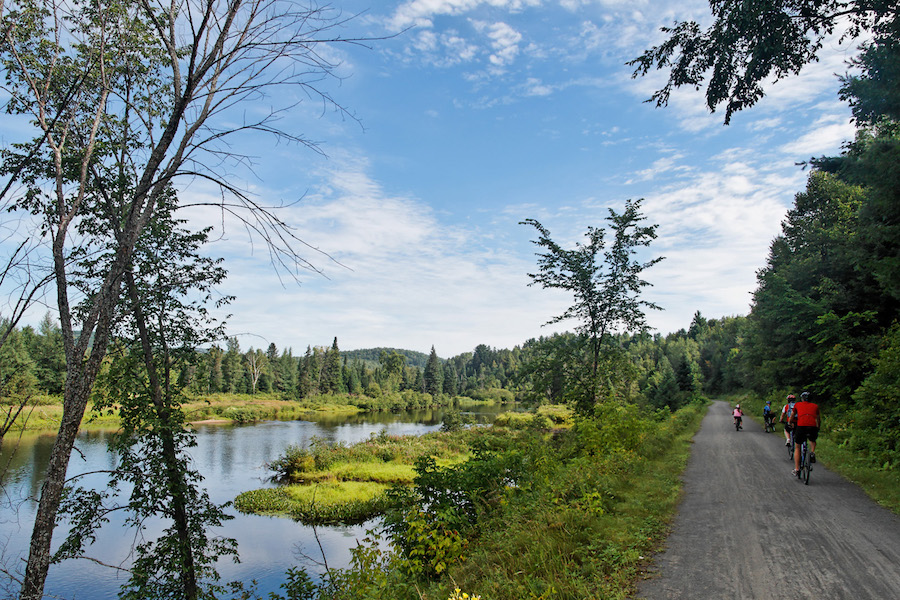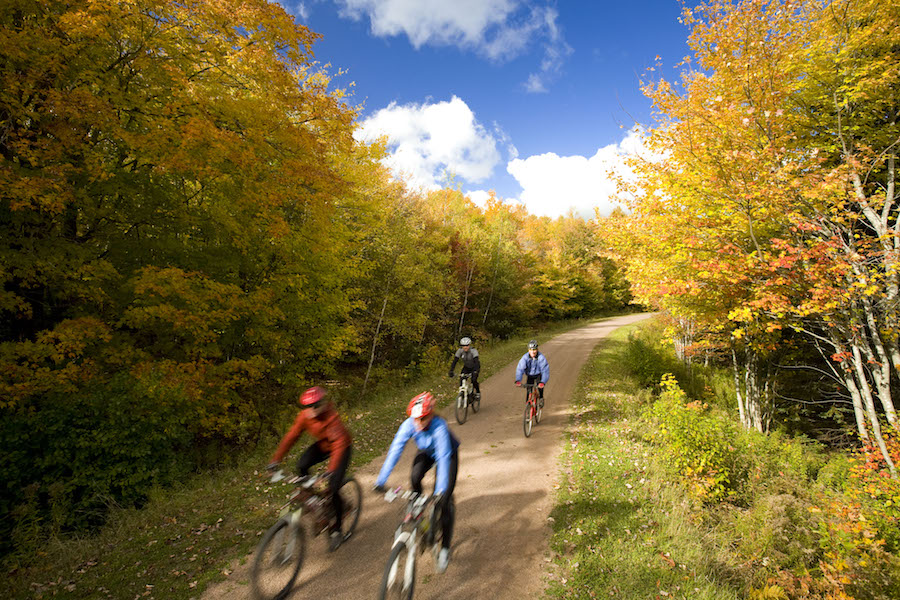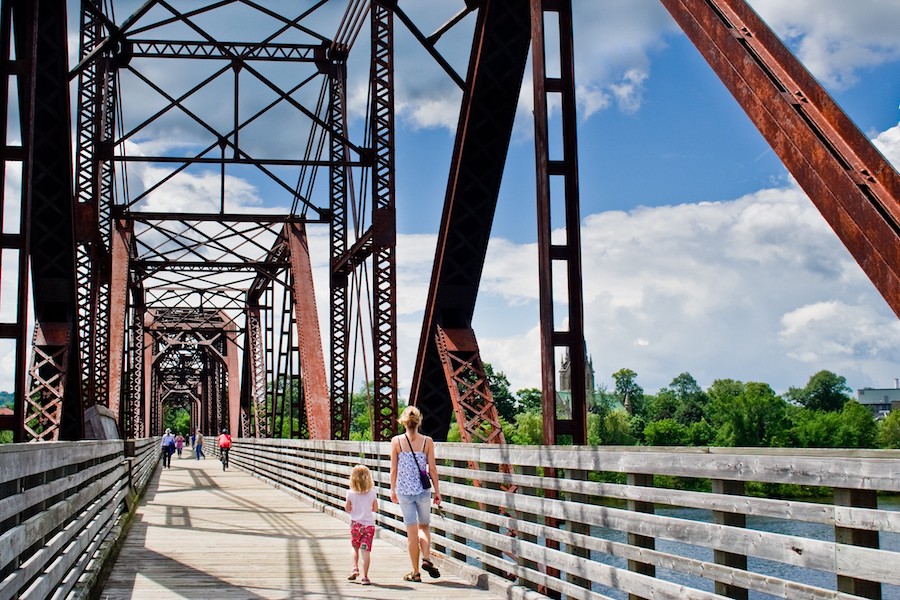A View From … The Great Trail in Canada

It’s a fitting way for Canada to celebrate its 150th birthday: In 2017, The Great Trail will be fully connected, enabling people to cross the country on a series of greenways, waterways and on-road routes to experience Canada’s rugged wilderness, rural beauty, historical attractions, vibrant cities and charming small towns up close. The nearly 15,000-mile route, formerly known as the Trans Canada Trail, touches each of the country’s 13 provinces and territories, and links three oceans: the Atlantic, Pacific and Arctic. Rail-trails play a key role in the project, since 66 rail-trails, covering more than 2,600 miles, are part of the expansive network. We’ve highlighted just a few of them here; to learn more, visit The Great Trail website.
British Columbia
Cowichan Valley Trail

Travelers looking for a rail-trail with “wow” factor will find it in the Cowichan Valley Trail on Vancouver Island. The jaw-dropping Kinsol Trestle alone is worth a visit, not to mention the trail’s seven other trestles, plus a range of picturesque landscapes of forests, farmland and friendly small towns along its 122-km (76-mile) route. The primarily gravel pathway is open to those on foot, bike or horseback.
Ontario
Kawartha Trans Canada Trail

Along its 53.8-km (33-mile) distance, the Kawartha Trans Canada Trail links several communities, a college campus and parks in southeastern Ontario. Tracing a rail line that originated in 1858, travelers will encounter many nods to the trail’s past, including a historical train display with an engine, cargo cars and caboose. The crushed-limestone pathway is enjoyed by bicyclists, pedestrians and horseback riders, as well as cross-country skiers and snowmobilers in the winter.
RELATED: A View From … The Industrial Heartland Trails Network
Québec
Park Linéaire le P’tit Train du Nord

True to the “Le P’tit Train du Nord” part of its name, which means “Little Train of the North,” this linear park follows an 1890s-era former railroad line in the Laurentian Mountains north of Montréal. Many of the old train stations along the route have been converted to tourist centers and rest stops, and much of the 200-km (124-mile) pathway is lushly wooded. Popular with bikers, walkers and cross-country skiers, the southern half of the rail-trail is crushed limestone, while its northern half is paved.
Prince Edward Island
Confederation Trail

Running tip to tip on Prince Edward Island, the 273-km (170-mile) Confederation Trail offers no shortage of memorable experiences on its route through woodlands, wetlands and quaint villages with views of sparkling rivers and the sea. The flat, well-maintained stone-dust rail-trail makes for an easy trip by bicycle, foot or wheelchair, and is open to snowmobilers in the winter.
New Brunswick
Bill Thorpe Walking Bridge

Spanning 580 meters (1,903 feet) across the St. John River, the Bill Thorpe Walking Bridge was named for a beloved local politician and advocate for the development of Fredericton’s trail system.
The former railroad bridge, part of the city’s Northside Trail, offers pedestrians and bicyclists spectacular views of New Brunswick’s capital city. From either bank, travelers can continue onto paved trails that front the waterway.
This article is from the Spring/Summer 2017 issue of Rails to Trails magazine. It has been republished here in an edited format.

Donate
Everyone deserves access to safe ways to walk, bike, and be active outdoors.
